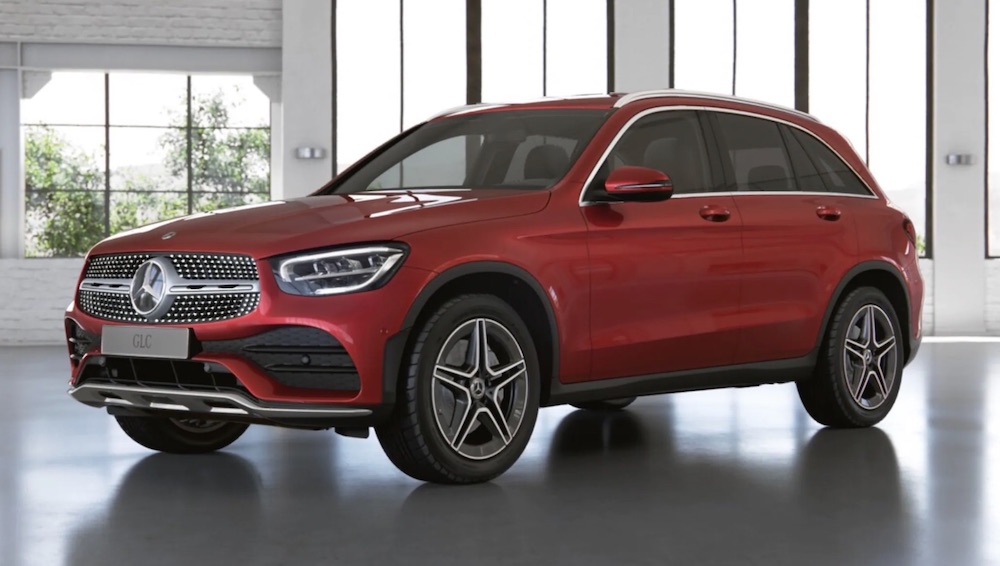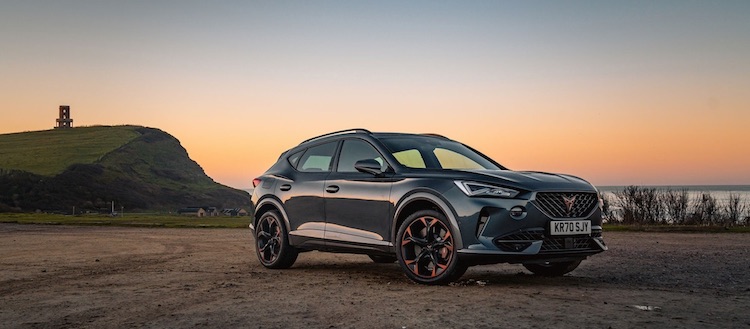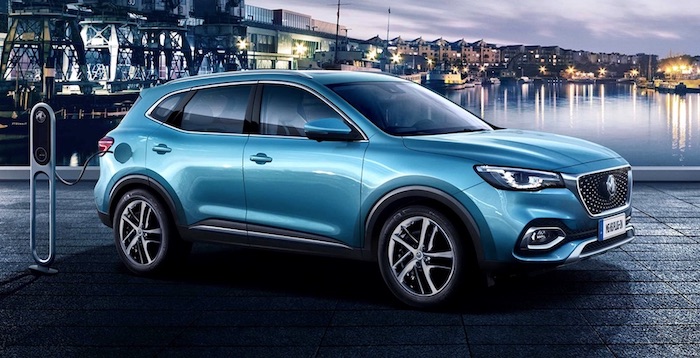Overview
Mercedes-Benz, simply known as Mercedes, is a leading global luxury automative manufacturer based in Germany. The company is headquartered in Stuttgart and is famed for its high quality passenger vehicles, to include the Mercedes-Maybach.
However, the company is also a leader in manufacturing commercial vehicles, to include the plug-in Mercedes eSprinter commercial EV and the plug-in Mercedes eVito electric van.
Mercedes-Benz EQ is the sub-brand used by the company for its portfolio of battery-electric vehicles (BEVs), plug-in hybrid electric vehicles (PHEVs) and mild hybrids. The pure electric cars are branded as EQ, while the PHEVs are branded as EQ Power. The mild hybrid vehicles are branded as EQ Boost. The PHEV portfolio includes:
- Mercedes A-Class Hatchback PHEV
- Mercedes A-Class Saloon PHEV
- Mercedes B-Class Hatchback PHEV
- Mercedes C-Class Saloon PHEV
- Mercedes C-Class Estate PHEV
- Mercedes E-Class Saloon PHEV
- Mercedes E-Class Estate PHEV
- Mercedes S-Class Saloon PHEV
- Mercedes CLA Coupé PHEV
- Mercedes CLA Shooting Brake PHEV
- Mercedes GLA SUV PHEV
- Mercedes GLC SUV PHEV
- Mercedes GLC Coupé PHEV
- Mercedes GLE SUV PHEV
- Mercedes GLE Coupé PHEV
Electric Cars: The Basics
For those of you new to zero-emission electric driving, we recommend a read of the following articles:
Sign up to the e-zoomed Electric Living newsletter
The Mercedes-Benz GLC 300 SUV PHEV
The Mercedes-Benz GLC premium mid-sized compact SUV was introduced in 2015. In 2019, the SUV was given a facelift for the 2020 model year. The GLC SUV includes two plug-in hybrid electric vehicle (PHEV) options: a petrol/electric and a diesel/ electric.
The GLC PHEV is a good all-rounder for those keen to migrate to lower tailpipe-emission electric cars. For company car drivers the obvious advantage is the reduced Benefit-in-Kind (BiK-15%) tax rate, compared to the conventional internal combustion engine (ICE) variant.
For individuals and families, the advantage is lower driving costs when driven on electric mode. Of course, for all stakeholders, lower air pollution is another benefit. The EV has 54g (CO2/km) claimed tailpipe emission.
The Mercedes-Benz PHEV has a 13.5 kWh onboard EV battery with a WLTP (certified) zero-emission electric range up to 28 miles. Nothing spectacular, but it is still a useful EV range for lowering the cost of driving. Depending on driving style, weather condition, onboard services used, passenger load etc, expect a real world range closer to 23 miles.
Though the EV range is limited, it is still sufficient for shorter commutes. Like most electric vehicles (EVs), the GLC PHEV incorporates regenerative braking to increase driving efficiency i.e. EV range.
Depending on where and when the EV is charged, the cost per mile on electric mode, is between 5 pence and 10 pence i.e. far cheaper than using the internal combustion engine (ICE). Moreover, using the electric mode, also improves the overall efficiency of the vehicle.
Mercedes claims a fuel economy up to 122.8 mpg for the GLC 300 e PHEV and up to 156.9 mpg for the GLC 300 de PHEV. Of course, the real-world fuel economy will be lower, but far improved compared to the fuel economy of the conventional petrol variant (44.1 mpg), as far as the e-mode is leveraged.
The all-wheel drive Mercedes PHEV is available with either, a diesel (2.0-litre, 4-cylinder) or petrol engine (2.0-litre, 4-cylinder), coupled with a 90 kW electric motor. Both the petrol and diesel PHEVs have a top speed of 143 mph (87 mph on electric mode). 0-62 mph performance is decent, with the petrol PHEV at 5.7 seconds and the diesel PHEV at 6.2 seconds.
The onboard charger is limited to 7.4 kW AC, with the EV capable of charging 10% to 100% in 90 mins via a dedicated domestic EV charger. Using a 3-PIN domestic socket will take up to 5 hours to charge the EV battery. We at e-zoomed discourage the use of using a domestic socket to charge an EV. It is always safer and more efficient to use an electric car charging point. The electric SUV is not capable of fast DC charging.
There are certainly other cheaper alternatives for mid-sized plug-in hybrid SUVs, but of course the quality will not be a Mercedes. The GLC PHEV has both an attractive exterior appeal and a high quality, technology-filled interior, to include: the Mercedes-Benz User Experience (MBUX) in car infotainment system.
MBUX can be voice activated, personalised and uses Artificial Intelligence (AI) to learn and adapt over time. It is able to predict personal habits, such as navigation for frequently-driven routes, or the radio stations etc.
In regards to practicality, the PHEV does have to compromise boot space for the placement of the EV battery. Despite this, the EV has a decent cargo volume (395 L). In terms of seating adults, the rear seats have ample legroom and headroom.
So for those seeking an all-rounder luxurious PHEV with lower tailpipe emissions, the GLC PHEV is worth considering. The PHEV does not qualify for the UK plug-in car grant (PiCG). Bottom-line, electric driving is good for the environment and the wallet.
You can lease electric vehicles (EVs) via e-zoomed at very competitive prices!
| PROS | CONS |
|---|---|
| An attractive exterior design and high quality interior | Fuel economy not as efficient as other PHEVs in the segment |
| A practical SUV despite the placement of the onboard EV battery | An expensive PHEV. Cheaper alternatives available |
| Four-wheel drive as standard | Limited emission-free electric range (28 miles) |
The Mercedes-Benz GLC 300 SUV PHEV (credit: Mercedes)
| At A Glance | |
|---|---|
| EV Type: | Plug-In Hybrid Electric Vehicle (PHEV) |
| Body Type: | SUV |
| Plug-In Car Grant (PiCG): | Not Available |
| Engine: | Petrol-Electric/ Diesel-Electric |
| Available In UK: | Yes |
| Variants (6 Options) |
|---|
| Mercedes-Benz GLC 300 e AMG Line (from £49,455) |
| Mercedes-Benz GLC 300 de AMG Line (from £51,081) |
| Mercedes-Benz GLC 300 e AMG Line Premium (from £52,255) |
| Mercedes-Benz GLC 300 de AMG Line Premium (from £53,881) |
| Mercedes-Benz GLC 300 e AMG Line Premium Plus (from £56,005) |
| Mercedes-Benz GLC 300 de AMG Line Premium Plus (from £57,631) |
| EV Battery & Emissions | |
|---|---|
| EV Battery Type: | Lithium-ion |
| EV Battery Capacity: | Available in one battery size: 13.5 kWh |
| Charging: | DC charging not available. On-board charger 7.4 kW AC (10% to 100%: 90 mins) |
| Charge Port: | Type 2 |
| EV Cable Type: | Type 2 |
| Tailpipe Emissions: | 54 – 50g (CO2/km) |
| EV Battery Warranty: | 6 years or 62,000 miles |
| Average Cost Of Residential Charging | |
|---|---|
| Battery net capacity : 8.8 kWh | £1.27 |
| Battery net capacity : 11.6 kWh | £1.67 |
| Battery net capacity : 12.0 kWh | £1.73 |
| Battery net capacity : 13.10 kWh | £1.89 |
| Battery net capacity : 14.10 kWh | £2.03 |
- Note 1: The average cost of residential electricity in the UK varies depending on the region, supplier and type of energy used. An average for the UK is 14.40 p/kWh.
- Note 2: Not all EV manufactures make available the data on net EV battery capacity, and in a number of instances the EV battery capacity advertised, does not state if it is gross or net capacity. In general, usable EV battery capacity is between 85% to 95% of the gross available capacity.
| Charging Times (Overview) | |
|---|---|
| Slow charging AC (3 kW – 3.6 kW): | 6 – 12 hours (dependent on size of EV battery & SOC) |
| Fast charging AC (7 kW – 22 kW): | 3 – 8 hours (dependent on size of EV battery & SoC) |
| Rapid charging AC (43 kW): | 0-80%: 20 mins to 60 mins (dependent on size of EV battery & SoC) |
- Note 1: SoC: state of charge
| Dimensions | |
|---|---|
| Height (mm): | 1664 |
| Width (mm): | 2096 |
| Length (mm): | 4658 |
| Wheelbase (mm): | 2939 |
| Turning Circle (m): | 11.8 |
| Boot capacity (L): | 395 |
| GLC 300 e 4MATIC | |
|---|---|
| EV Battery Capacity: | 13.5 kWh |
| Pure Electric Range (WLTP): | 27 – 28 miles |
| Electric Energy Consumption (kWh/100km): | 17.5 |
| Fuel Consumption (MPG): | 117.7 – 122.8 |
| Charging: | DC charging not available. On-board charger 7.4 kW AC (10% to 100%: 90 mins) |
| Top Speed: | 143 mph (electric mode: 87 mph) |
| 0-62 mph: | 5.7 seconds |
| Drive: | All-wheel drive (AWD) |
| Electric Motor (kW): | 90 |
| Max Power (hp): | 211 (combustion engine)/ 122 (electric motor) |
| Torque (Nm): | 350 (combustion engine)/ 440 (electric motor) |
| Transmission: | Automatic |
| Seats: | 5 |
| Doors: | 5 |
| Kerb Weight (kg): | 2,030 |
| Colours: | 8 |
| NCAP Safety Rating: | N/A |
| GLC 300 de 4MATIC | |
|---|---|
| EV Battery Capacity: | 13.5 kWh |
| Pure Electric Range (WLTP): | 27 miles |
| Electric Energy Consumption (kWh/100km): | 17.9 |
| Fuel Consumption (MPG): | 148.7 – 156.9 |
| Charging: | DC charging not available. On-board charger 7.4 kW AC (10% to 100%: 90 mins) |
| Top Speed: | 143 mph (electric mode: 87 mph) |
| 0-62 mph: | 6.2 seconds |
| Drive: | All-wheel drive (AWD) |
| Electric Motor (kW): | 90 |
| Max Power (hp): | 194 (combustion engine)/ 122 (electric motor) |
| Torque (Nm): | 400 (combustion engine)/ 440 (electric motor) |
| Transmission: | Automatic |
| Seats: | 5 |
| Doors: | 5 |
| Kerb Weight (kg): | 2,115 |
| Colours: | 8 |
| NCAP Safety Rating: | N/A |
While e-zoomed uses reasonable efforts to provide accurate and up-to-date information, some of the information provided is gathered from third parties and has not been independently verified by e-zoomed. While the information from the third party sources is believed to be reliable, no warranty, express or implied, is made by e-zoomed regarding the accuracy, adequacy, completeness, legality, reliability or usefulness of any information. This disclaimer applies to both isolated and aggregate uses of this information.









































